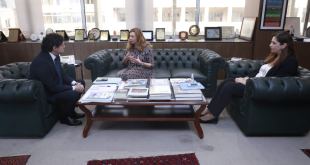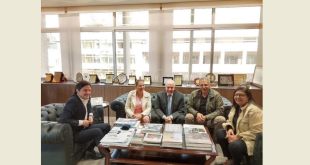President Donald Trump’s predictions that victory is close in the coronavirus crisis are becoming increasingly impossible to square with the harrowing escalation of America’s battle against the pandemic.
Trump on Tuesday spied “light at the end of the tunnel” and envisioned packed church pews at Easter as America breaks free of stay-at-home orders and marks the return of its “raring to go” economy.
“I thought it was a beautiful time. A beautiful timeline,” the President said Tuesday, making clear that his target date to open the nation by April 12 — less than three weeks away — was driven by sentiment and symbolism, not medical data on the virus’s fast-tightening grip on the nation.
Anyone can empathize with the President’s desire to crank back an economy that has probably already shed millions of jobs and left many Americans wondering how long they can survive without wages. But Trump has political motives too: he needs a swift rebound since the economy’s long winning streak represented his best argument for reelection.
The President’s upbeat messaging came as more governors imposed strict stay-at-home limits on residents and just before the White House and Senate reached a deal on a $2 trillion stimulus package. New York’s Andrew Cuomo compared the virus to a “bullet train” and warned that more New Yorkers would soon die amid a ventilator shortage. He said the apex of the city’s aggressive epidemic would peak in 14 to 21 days — at the same time the President wants to open up the country.
The gap between the President’s perception of the situation and reality risks squandering the credibility that leaders need in a time of crisis, when inspiring hope must be balanced with a realistic assessment of the challenge ahead.
Health care workers are speaking in increasingly alarming terms about the situation in the nation’s emergency rooms. Louisiana told the White House that New Orleans’ health care capacity would be overwhelmed in a week. Even in Trump’s optimistic White House briefing, his own officials, in a stunning moment, told anyone who had recently been in New York to immediately self-quarantine. And the World Health Organization warned the US was on track to follow hard-hit Italy and China as the next epicenter of Covid-19.
The numbers are also staggering. Cases have doubled in two days to nearly 53,000, with more than 700 deaths. Some of the rising infection number may reflect a stepped-up testing operation. But it also suggests the virus is far more widespread than first assumed.
Hospitals under siege
The reasons why the administration advised social distancing and other precautions at the start of a 15-day drive to beat the virus last week are even more acute a week later.
Health officials are desperate to check the spread of the virus to alleviate an expected wave of infections that could overwhelm the hospital system and cause people who could be saved to die.
In a powerful, at times desperate, briefing on Tuesday morning, Cuomo lashed the federal government for not dipping into its reserves to help with his shortfall of 30,000 ventilators.
The administration later announced the dispatch of 4,000 of the machines to the state, which now has more than 25,000 cases of Covid-19.
“We have not flattened the curve and the curve is actually increasing,” Cuomo said, warning New York was the “canary in the coal mine” for what would happen in the rest of the country.
Such comments are one reason why Trump’s confident predictions that he can soon open up vast swaths of the country to economic activity appear premature.
“There are no moats, there are no force fields around any place in America,” Los Angeles Mayor Eric Garcetti told CNN’s Wolf Blitzer.
“There may be some rays of sunshine in the months ahead, but right now there are still dark, dark clouds.”
The President set his April timeline in a softball town hall interview with Fox News at the White House.
“I would love to have the country opened up and raring to go by Easter,” he said.
He used the appearance to revive comparisons of the virus to the far less virulent flu and car accident fatalities that his top public health officials have spent weeks seeking to dismiss. He was mirroring commentary on conservative media from pundits who say that since the virus has a death rate in low single figures and mostly affects the elderly, other people should go back to work.
One emergency physician, Dr. Dara Kass, herself recovering from the virus, told CNN’s Brianna Keilar that the President’s words scared her.
“There is no magic fix to this. There is no correction of the economy if we don’t address this as an issue,” she said.
Trump’s likely 2020 election foe, Democrat Joe Biden, warned that the President needed to heed science.
“He should stop talking and start to listen to the medical experts who talk about having an economic crisis,” Biden told CNN’s Jake Tapper.
“You want an economic crisis? Watch this spike. Watch the number of dead go up. Watch the number of people, who in fact, connect with this virus.”
Another criticism of the President’s impatient approach is that if restrictions on movement are lifted too early, that could accelerate infections and cause more economic damage in the long run.
“If the White House were to relax the social distancing measures ‘soon,’ well ahead of the necessary timeline to have a significant impact on our view, it would raise the risk of increasing the peak or delaying the time to peak,” investment bank Morgan Stanley said in a report Tuesday.
Virginia’s Democratic Gov. Ralph Northam agreed that it would be better for everyone if the economy fired up again soon. But he added: “The data tells us that this will be with us for at least two to three months and perhaps longer.”
Trump’s political strategy revealed
There were increasing signs on Tuesday that Trump is following a strategy designed to shield him politically from the aftermath of the pandemic.
He appears in the White House briefing room every evening around prime time to deliver the most positive news from the day — often seeming overly optimistic on the potential of some yet-to-be-proved therapies — or repeating previous announcements, like the dispatch of hospital ships to Los Angeles and New York.
The President promised on Tuesday evening that any decision on putting America back to work would be based on medical necessity and the need to protect the health of Americans.
“We’ll only do it if it’s good. We’ll do large sections of the country,” Trump said, adding he would listen closely to recommendations from Dr. Anthony Fauci and Dr. Deborah Birx, two top medical experts on the White House coronavirus task force.
But Fauci said he had told the President, “You can look at a date but you gotta be very flexible,” he said, not for the first time seeming to undercut Trump.
Soon, Trump’s Easter timetable may come to be seen as unsustainable.
But the President could get a political win anyway by becoming the first major politician to position himself on ground that will be crowded in the coming weeks — as the full misery of economic deprivation begins to bite deep and more and more Americans plead to go back to work.
The President also knows that unless the economy gets going early in the second quarter, the changes of it exploding back to life by November’s election are slim.
CNN
 Lebanese Ministry of Information
Lebanese Ministry of Information



